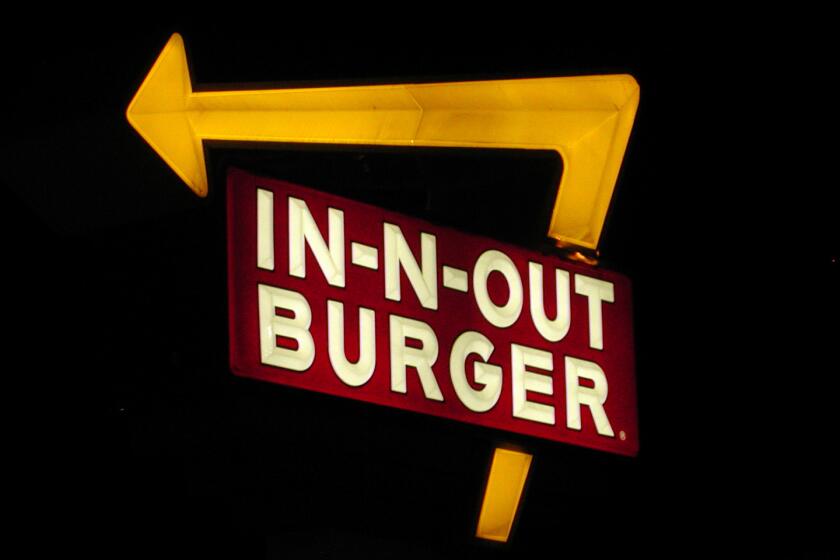Is it cheaper to switch to lower-grade gas?
- Share via
With fuel prices on the rise, some drivers are pumping less-expensive regular-grade gasoline into cars for which premium fuel is recommended.
Although that might save money initially, auto experts are divided on the wisdom of such a strategy, which some say could end up costing you more.
What you save at the pump can be lost on the road as the electronics in the engine ratchet down performance to deal with the lower-grade fuel, experts say. Using the cheaper gas might also damage the vehicle over a long period.
“If the owner’s manual says premium fuel is recommended, then you can switch down,” said Steve Mazor, manager of the Auto Club of Southern California’s Automotive Research Center.
Using a lower-grade fuel will trim maximum horsepower a bit, impede acceleration and “drop fuel economy by a couple of tenths of a percent,” Mazor said.
But it’s not a good idea to use regular gas in vehicles for which the manufacturer says premium fuel is required.
Amy Sisoyev of Eagle Rock started filling her 2001 Volvo S40 turbo with regular gas last month after rising prices pushed her over the $40 a week she has allotted for gasoline. Volvo recommends operating the car on premium fuel.
“I do a lot of driving, going all over the city to meet with clients or go to events,” the publicist said.
Acceleration lags a touch and she has noticed a small drop in fuel economy, “but I do get a lot more gas for my $40 and the difference in mileage isn’t enough so that I have to get gas a day or two earlier,” Sisoyev said.
Nationally gas prices are still on the rise. The U.S. average for regular gasoline climbed to $3.897 a gallon, up 5.5 cents since last week, according to Monday’s AAA Fuel Gauge Report. In California, the average fell 1.9 cents to $4.331 a gallon.
Looking at national gas price averages, a driver switching to regular from premium would save about 5% at the pump. Drivers making the switch should measure their fuel economy to make sure their mileage isn’t going down by a greater amount.
In states with high gas prices such as California, the difference between regular and premium grades is closer to 4%, making this strategy less effective.
“A 4% decline in fuel economy would not be surprising,” said Harold Schock, director of the Engines and Automotive Research Labs at Michigan State University.
With fuel options that include the 85-octane grade sold in Colorado and California’s special low-pollution summer premium blend, no one has done the research to figure out exactly how much power and mileage are lost with grade switches, Schock said.
And fuel economy arbiters such as the Environmental Protection Agency are not about to spend time and money on expensive tests to figure out how the hundreds of vehicle models and different engine options respond to various grades of gas, Schock said.
It’s also not clear what the long-term effect might be on a vehicle’s engine, he said.
Modern cars have knock sensors that detect if the vehicle is about to misfire and change the engine’s timing to prevent this from happening when a driver uses a lower-grade gas. Knocking, in which gas burns unexpectedly in an engine’s combustion chamber, can damage the motor. But the sensor stops it from occurring and prevents any immediate damage to the engine.
“If you use fuel with the lower octane rating, our engines will deal with it,” said Thomas Plucinsky, a spokesman for BMW. “But why would you do it in a car like our 335i? You are not getting the power and performance you are expecting and paid for.”
It’s also not clear whether the repeated triggering of the sensor would eventually hurt engine life long after the vehicle is out of warranty, Schock and other automotive engineers said.
“What appears in the owner’s manual is the best set of practices for operating a car if you want to get the longest life and the best performance out of it,” Schock said.
Just about all the experts agree that drivers exact far greater savings by paying more attention to their vehicles’ upkeep and their driving habits.
“It’s probably better to follow the gas recommendation in the owner’s manual and then learn to drive less aggressively and to slow down a bit,” said John Swanton, an air pollution specialist with the California Air Resources Board. “Why handicap the vehicle’s performance?”
Schock said easing up on the throttle in anticipation of red lights and slowing traffic, not making hard starts from a stop and not driving with underinflated tires will all save more money than downgrading to a lower fuel.
Despite the debate, Sisoyev isn’t sure that she’ll ever buy a higher grade of gas again.
“It is so tempting to buy the lower-price gas,” she said. “It would be hard to go back to premium.”
More to Read
Inside the business of entertainment
The Wide Shot brings you news, analysis and insights on everything from streaming wars to production — and what it all means for the future.
You may occasionally receive promotional content from the Los Angeles Times.











